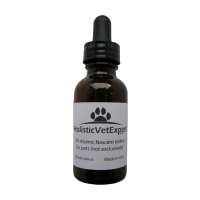
|
|


|
|
|||
Equine EPM - Equine protozoal myeloencephalitis I have successfully treated horses with EPM which can be a devastating disease. EPM in horses, Equine protozoal myeloencephalitis (EPM), primarily caused by infection with Sarcocystis neurona, is known in allopathic veterinary medicine to be a progressive disease of the central nervous system (CNS). We refuse to accept that prognosis. I have found a very good therapy regime for this disease. Initial symptoms are usually incoordination
noticed when riding or just walking in the barn yard or pasture. I have noticed a typical 'cross-over' in the front
limbs. There is also an obvious lethargy and I am sure these guys are experiencing a head ache. The symptoms seem
to be more severe on hot days. Vague, intermittent lameness may also be present. Keep in mind this is also a classic symptom that I have seen with Equine Herpes Disease-the neurological form. Patients can also show head tilt, some facial nerve paralysis, twitching of face muscles, depression, and even seizures. Here is the life cycle of this nasty parasite as described by the US Department of Agriculture.
by Dr. Jenifer Preston - October 4, 2010 ###
| |||
|
We have Nascent Iodine!
| Case Histories |
MAX: A CASE OF IMMITICIDE POISONING
Results of routine heart worm treatment
Dana Matthews DC
Greg Hollandsworth DC
"Max the boxer has had quite a life. He was born in Texas on July 25, 2006 and for the first 2 ½ years of his life, he lived with a family who had too much going on to take proper care of him. They had too many kids and other dogs and so Max, being an energetic boxer puppy and too much to handle, got chained to a tree in the backyard. Finally the family decided to give Max up for adoption so that another family could offer him the life he deserved. Unfortunately, by the time they had decided to do that, Max had already been bitten by a mosquito that carried heartworms and it subsequently infected him...."


Home About Dr Preston Why Holistic? Resources Content Privacy Statement Site Map Contact Us
Copyright ©2009, Holistic Vet Expert, All Right Reserved








